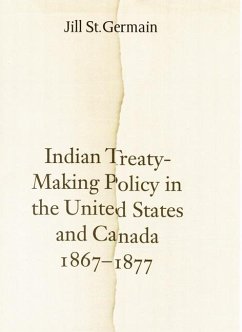During the last three decades of the nineteenth century, the United States and Canada embarked on major diplomatic ventures with the Indian peoples of the Plains and Prairie West. Both nations employed the treaty, long a tool in North American Indian -- white relations. In this study, Jill St. Germain presents a pioneering examination of the treaty-making policies of the United States and Canada in the nineteenth century, comparing the major treaties negotiated in the United States with the Sioux, Cheyennes, Kiowas, and Comanches and the Numbered Treaties concluded with the Crees, Ojibwas, and Blackfoot in Canada. She explores the common roots of Indian policy in the two nations and charts the divergences in the application of the reserve and "civilization" policies that both governments embedded in treaties as a way to address the "Indian problem" in the West. St. Germain points out that despite official rhetoric, Canadian Indian policies -- often cited as a model that the United States ought to have imitated -- have been as dismal and fraught with misunderstandings as those enacted by the United States.








